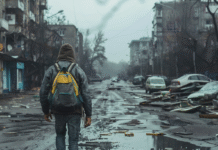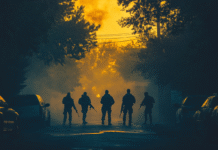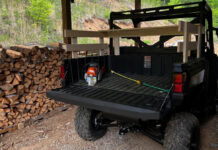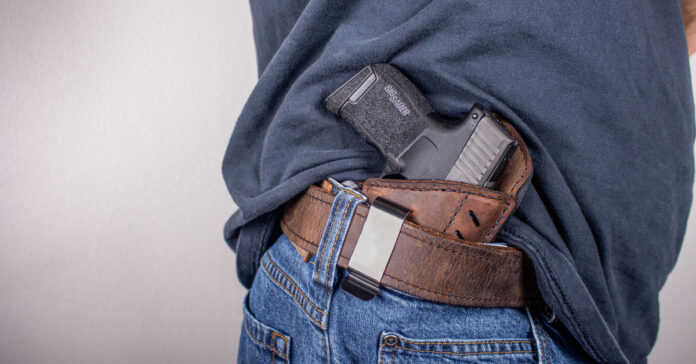
The decision to carry a gun is one you should not take lightly. You should be confident in your gun handling, firearms safety, and your shooting ability. More than thirty years ago, when I decided to carry a gun, I knew my decision meant there would be a gun present everywhere I went. This increased the chances I could be killed in an accident or if my gun was taken for me. It also meant I had at hand a way to kill everyone I met. (Serious stuff.) If you have an anger problem, that may not be a good thing. Again, it’s not a decision to make on a whim.
If you decide to carry, I recommend you practice carrying at home with an empty gun, or at least one with an empty chamber, for a week or two. This will allow you to figure out if it bangs against your chair when you sit down to eat, what to do with your gun when you use the toilet, where to put it when you and your significant other get frisky, and whether you can draw it while riding in the car.
You should also consider how you will carry, where on your body, and what clothing changes you need to make to accommodate carrying.
I live in a state that allows both open carry and concealed carry. I do either, depending on the situation. While I respect the rights of people to open carry pretty much anywhere they want, I often choose concealed carry when I am in public.
This post reflects my opinions after carrying 30 years. Don’t follow my suggestions blindly because my situation may differ from yours. Your state laws may also differ. Be smart about it.
Open Carry
When I put my pants on in the morning, I work the belt through the loops on my holster, and I slide a Glock into it after I buckle up. At night, I draw the gun out of the holster and it goes on my bedside table. As you can see, I am carrying constantly, and my default state is open carry, unless it is cold enough not to require a fleece or sweatshirt.
Besides fast access to your firearm, an advantage of open carry is you can let someone know you are carrying a weapon without being accused of brandishing it. I find this is valuable if someone is on my land.
For example, if I go out to our private road to warn someone that they are trespassing (you know, in case they missed the signs), I think having a gun on my belt is a subtle way to reinforce the message. If that person is a local who has a reasonable explanation for why he’s there, he probably isn’t bothered by my gun and we’ll chat for a while. If that person is a tourist who just wanted to see where that dirt road goes, chances are they won’t be back. Maybe they’ll think twice the next time they see a “Private Road, No Trespassing” sign. That’s the response I want.
During a grid down scenario, there might be times you want to be visibly armed to send a message. A pistol can achieve that. An AR15 may drive the message home.
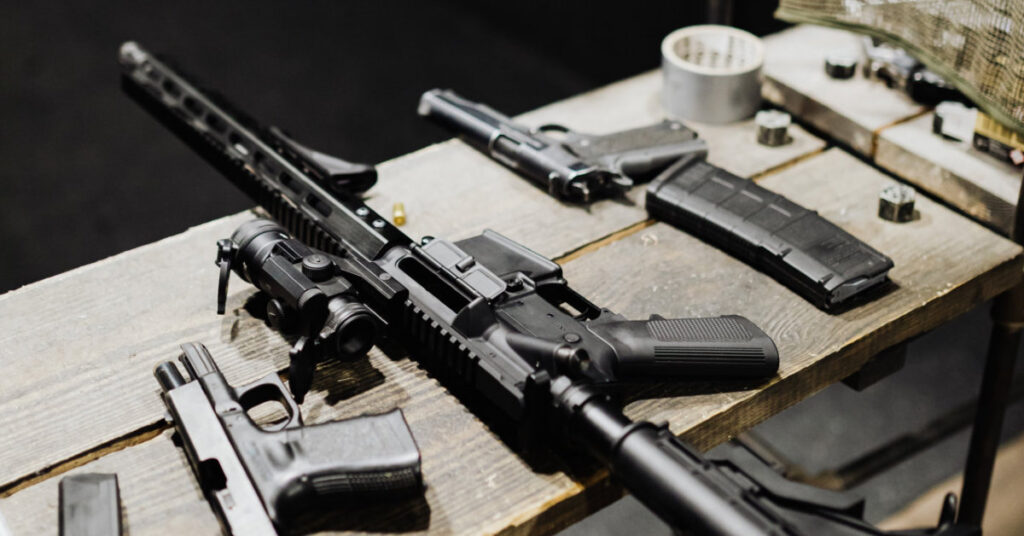
Disadvantages
One disadvantage of open carry is that potential bad guys will know you are armed and are a potential threat. If they are planning a violent crime, they could decide to shoot you first so you can’t intervene to stop them. Of course, they might also wait until you clear the area before proceeding. So while open carry might keep you safe, it might not. That’s why it’s a personal call. In general, when I am in public, I carry concealed for this reason and to prevent someone from seeing the gun and deciding they want to snatch it.
There are sound tactical reasons preppers and other legally armed civilians should carry concealed. Chief among them, doing so may give you the element of surprise. It also gives you the opportunity to try to disengage, but still have a fall-back plan. Don’t be in a rush to draw your weapon in a confrontation unless the other party is threatening you and yours with death or grave bodily harm and you feel it is your only viable option. If they get the drop on you, wait for the moment they look away or are distracted, and then draw and engage.
Tell your family never to say something like “shoot him!” If I am in a bank (rare) and the bank is hit by armed robbers, I will not draw and engage them in a shootout unless they start shooting first. Chances are, they are there for the bank’s money, not mine. There is also a possibility that they have a tail gunner, an accomplice already in the bank, who is looking to take down a hero. The last thing you need in that scenario is your eight-year-old saying, “Shoot him, Daddy.”
Open Carry Scenarios
I open carry on my property every day. This extends to other activities in the general area, whether that’s visiting a neighbor, walking the dog, or hiking in the woods. Out here, we just assume everyone is armed, whether or not you see the gun.
When bears are about, I often upgrade to a large-bore revolver in a hunting rig that rides on my chest. I can wear this over my jacket or parka. Yes, bears have been killed by 9mm, .40 and .45 semi-auto pistols, but there’s a long history of successful bear defense using large-bore revolvers. Besides, I still carry the Glock. It’s just under several layers.
I am also in favor of open carry in your personal vehicle. It’s difficult enough to draw from the 4 O’clock position while wearing a seatbelt without fighting through a cover garment. I think carrying concealed in your personal vehicle is akin to wearing an N-95 mask alone in your car; it isn’t doing anyone any good. If I want to carry concealed when I get to my destination, I’ll throw on a shirt or jacket. I can stand between my door and the truck’s body and the gun is hidden.
Concealed Carry Scenarios
As someone who carries, I think it is important to be polite. That means, I don’t open carry in areas where tourists are likely to be present because our local merchants depend on tourists. I also don’t open carry in places where someone is likely to call the police and report “a man with a gun.” That means I change my behavior when I go to a city. I carry to avoid problems, not cause them.
One “impolite” thing I do is to carry in places where signs prohibit it. That’s because the signs have little weight in our state. Still, the merchant can ask you to leave. If you don’t, they can have you trespassed. Better to avoid trouble, and carrying concealed is a good way to do so. I have never been asked to leave a business because I am carrying, but that’s because they don’t know. That’s the way I like it.
In general, I conceal carry in public, but practice open carry outside of city limits and all around my property. But I’m flexible. I can do both.
On-Body Carry versus Off-Body Carry
I strongly recommend on-body (i.e. in a holster on your person) because you have more control over your weapon. If you carry in a purse, fanny pack, sling bag, etc., it can be snatched, stolen off the back of your chair, grabbed, etc. You not only lost your wallet, but your gun, and now you have to explain that to her police.
I have two fanny packs, but the most use they get is carrying a weapon from my house to the car. I’ll leave the house with the weapon in a fanny pack and stash it in my truck if I’m going to a location where carry is prohibited, such as a courthouse or government office, or I am going somewhere I will strip naked, like the doctor’s office.
FYI, to someone in the gun world, wearing a fanny pack screams “I’ve got a gun in here!” it may not be in plain view, but you’re not fooling anyone in the know. That bump printing through my shirt is less obviously a gun and could be my phone.
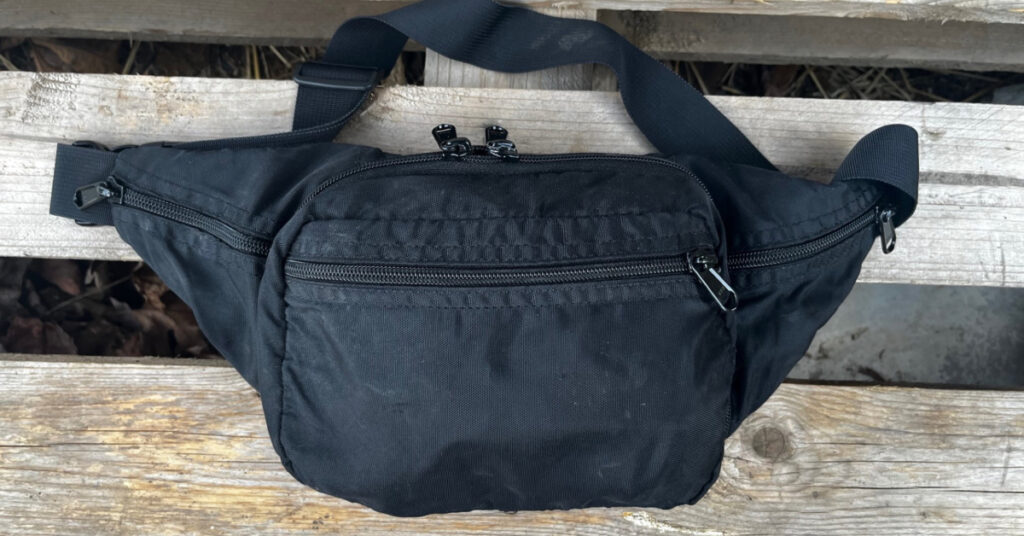
If your idea of exercise requires spandex or you live in yoga pants, then off-body carry might be your only reasonable choice. I get that, but I encourage you to do so thoughtfully and carefully because it’s your responsibility to always have your weapon under your control.
Loaded Chamber versus Empty Chamber
On revolvers and many auto pistols, a loaded chamber means the gun will fire if the trigger is pulled. While the trigger is usually pulled by the finger, there are all sorts of scenarios where something else has pulled it, from an item in a purse to a strap on a tactical vest.
We are therefore faced with a tradeoff: an unloaded chamber is safer, but you can respond to a threat faster with a loaded chamber. What do you pick? For me, it depends on the method of carry and the threat level.
When I carry in a fanny pack, I leave the chamber empty. It will take two hands to draw from my fanny pack, so racking the slide as part of that (already slow) draw won’t be a big deal. Likewise, when I carry a gun in a pack, be it a pistol or my Keltec Sub 2000, I leave the chamber empty because these are not instant response weapons. A gun on my belt, on the other hand, is an instant response weapon. It’s usually going to have a round chambered.
If you carry in a briefcase, purse, or pack, I recommend an unloaded chamber if the weapon is not secured with Velcro in a holster. You do not want to be fishing around for your gun in your bag and have an accidental discharge because your finger or something else fired the gun by mistake. It’s a good way to shoot yourself or something else.
Many people are afraid to carry with a loaded chamber. The solution is more training, or maybe a gun with a manual safety. If you are uncomfortable carrying with a round in the chamber, don’t do it.
How Immediate is the Threat?
When I am in my man cave in the basement, I could carry with an empty chamber because no one is going to sneak up on me. I have locked doors, video cameras, and a large dog that rushes upstairs to the front door whenever she hears something. We can both hear cars well before they get here. In other words, I have time to draw the gun, chamber a round, and reholster before investigating any potential threats, even if someone was kicking in my door.
If I feel that threatened, chances are I’m likely to grab my shotgun which is staged nearby. Remember, the purpose of a pistol is to defend yourself until you can disengage or to fight your way to a long gun. Why not start with a long gun?
If you keep the chamber empty while at home because you think you are “safe” you need to remember to chamber a round when you leave the house. I think it’s easier to have a gun in one configuration all the time. If in doubt, rack the slide. Worst-case scenario, you will have one less round. If you don’t, you could find yourself be pressing the trigger wondering why it doesn’t go bang.



